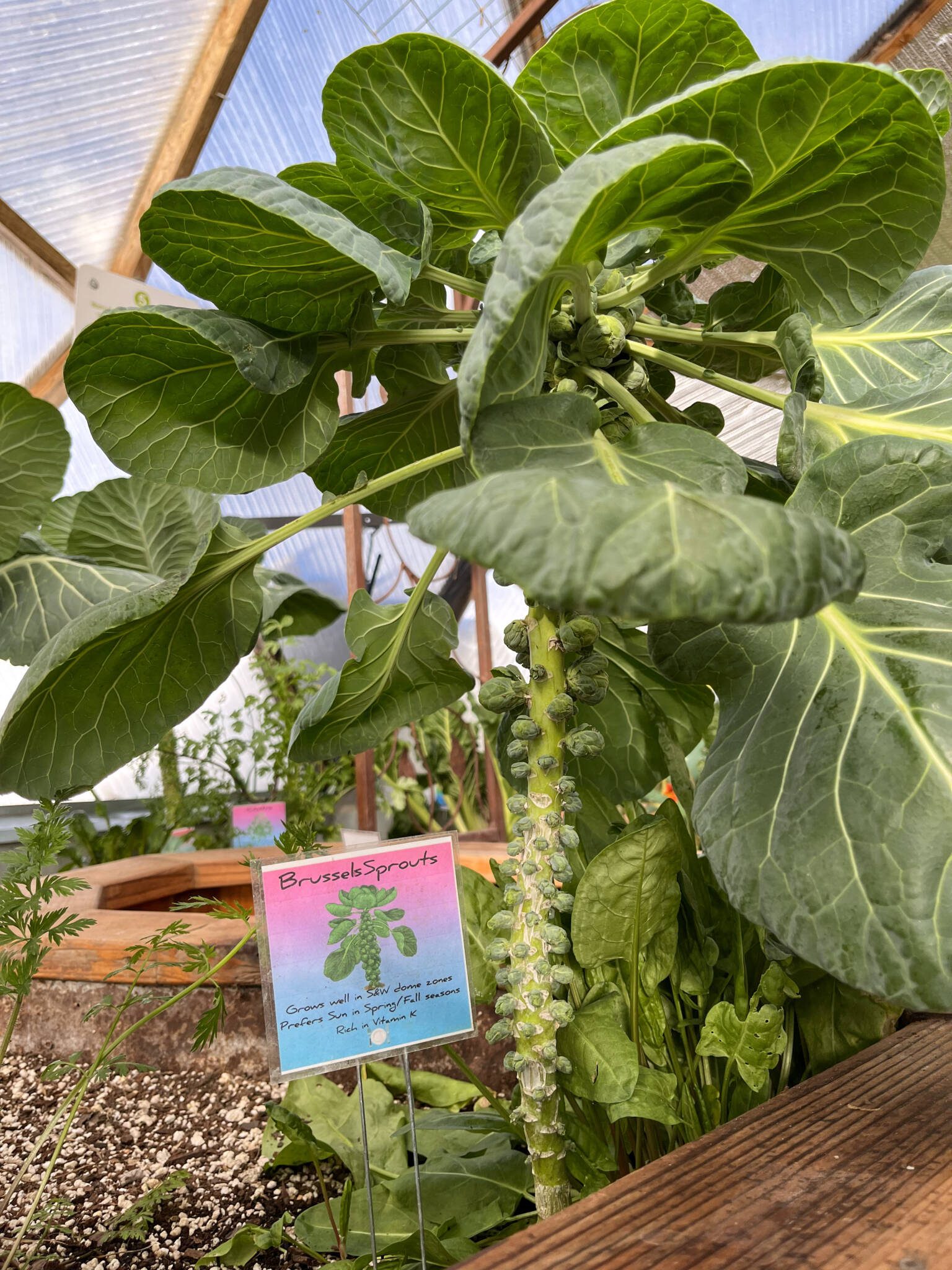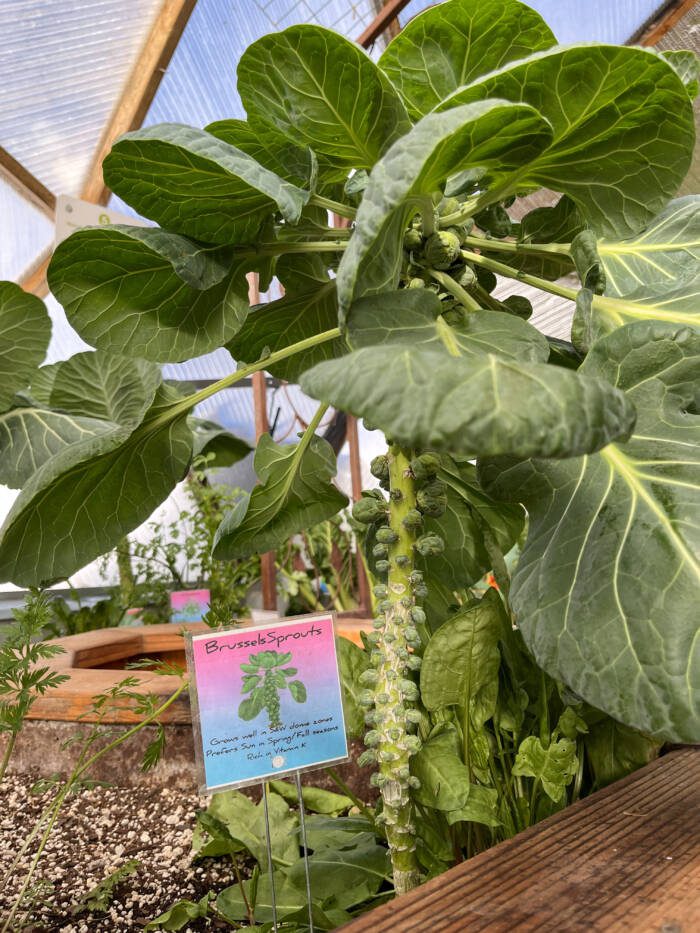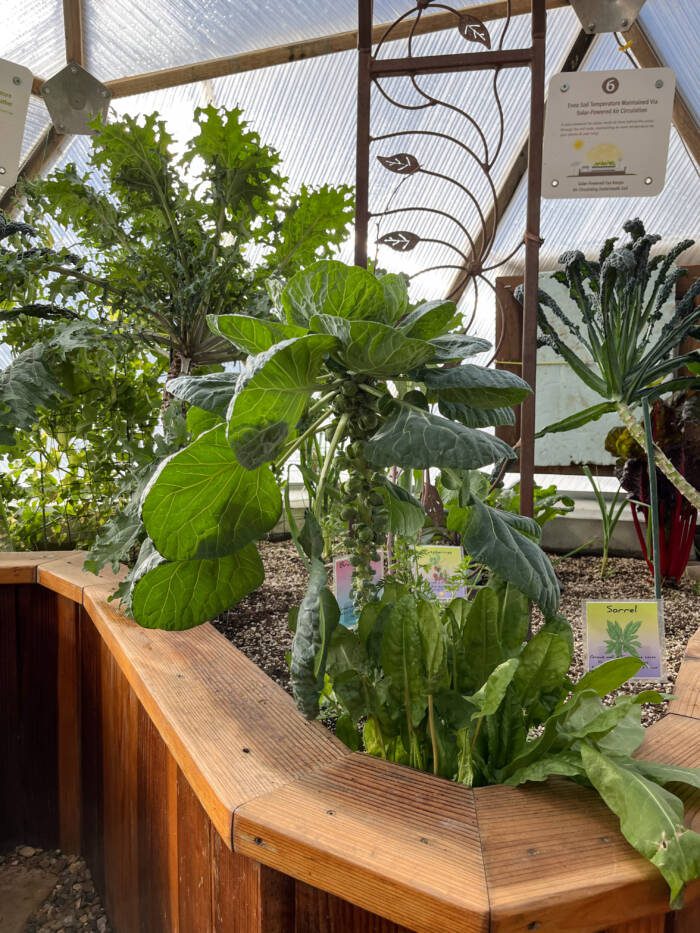
Featured Plant of the Month: Brussels Sprouts!

Brussels sprouts or Brassica oleracea var. Gemmifera are from the Brassicaceae family, native to the Mediterranean area. It was named after Brussels, Belgium where it was first cultivated in the 16th century. If you have trouble remembering the spelling, it always has the “s” at the end just like the city of Brussels. Brussels sprouts are a cultivar of wild cabbage (they don’t party as much as cabbage) and date all the way back to ancient Rome! Brussels sprouts were brought to Louisiana by the French in the 1800s, but nowadays New York and California are the main producers of this little sprout. They are not seen in home gardens as much as other vegetables due to their long growing season (80-100 days), they are a cool weather crop, and because the flavor tends to improve AFTER a light frost or two.
Growing Brussels Sprouts
Brussels sprouts are a slow-growing crop that is best when it matures in cool, fall weather. They need a long growing season and are best harvested in fall or winter if planted outdoors or in winter in your Growing Dome. It’s best to sow seeds ¼-½ inches deep and 2-3 inches apart. They germinate at soil temperatures between 45-85 degrees F. Seedlings will need to be thinned to between 12-24 inches to allow them plenty of room to grow. You will need to water them well when you sow and again when transplanting, but be careful not to disturb the soil as their roots are shallow and easily damaged. They can grow 2-3 feet tall, so be prepared to stake them when they get tall.
Brussels Sprouts Fun Facts
In 2013 in London, the energy of 1,000 little Brussels sprouts lit up an 8-foot-tall Christmas tree thanks to the efforts of a team of schoolchildren and scientists. Think of what this little veggie can do for you! Brussels sprouts get called the most hated vegetable, but one reason for that is overcooking them, which then releases foul-smelling sulfur compounds. Another reason for their reputation of being despised is the TAS2R38 gene. This gene was discovered in the 1930s and it decides whether or not we taste the chemical PTC, which is responsible for bitterness and is found in sprouts and some other foods. So don’t blame the Brussels sprouts, blame your genes! There are also some easy cooking tips to help you fall in love with Brussels sprouts; when cooked correctly they are lovely and delicious. If you do love them, maybe you should enter a Brussels sprouts eating competition! In 2008, Linus Urbanec entered a food-eating competition in Rottne, Sweden, and won, eating 31 Brussels sprouts in one minute. That’s a lot of sprouts!
Brussels Sprouts Companion Plants
Companion plants are like seating your friends together at a party and Brussels sprouts will flourish when planted with companions. Brussels sprouts are a favorite of many pests so planting basil, mint, and garlic can help deter bugs as well as attract beneficial insects. Marigolds and nasturtiums are excellent flowers to plant near your Brussels sprouts and mustard can act as a trap crop. Once you spot pests on your mustard plant, dig it up and remove it from your Dome. Brussel sprouts also do well with the following plants: beets, bush beans, carrots, celery, lettuce, peas, radish spinach, and potato. However, some plants are not friends with Brussels sprouts so to avoid a “food fight”, do NOT plant kohlrabi, pole beans, or strawberries nearby. To learn more about the benefits of companion planting click this link: Gardening Know How: Brussels sprouts companion planting

How to Harvest Brussels Sprouts
Sprouts mature from the bottom of the stalk upwards and can be harvested when they reach one inch in diameter. You can pull the whole plant and hang them upside down in a dry basement for about a month, but remove the leaves first. You can store them for about one month in a root cellar or basement but remove the roots first. If you grow them outside, they enjoy a light frost before being harvested, but in the Dome we hope you don’t have frost!
If your genes don’t get in the way of you trying and enjoying Brussels sprouts, try a new recipe! When searching “Brussels sprouts recipes” there were over 27,000,000 results so instead here’s a recipe from our website. Give it a try and let us know how you like it.
Happy gardening and enjoy your sprouts! 🌱
